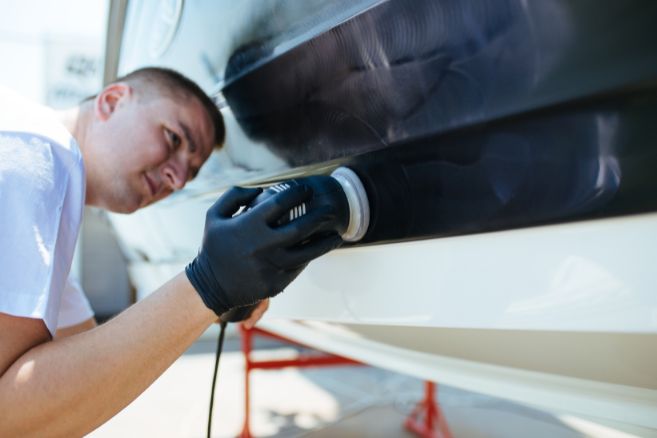Ways To Polish Acrylic Parts Until They Are Clear
Posted by Bill Wright on

Acrylic is a versatile manufacturing material. It offers multiple applications, such as home improvement projects, teleprompting, and home decorations. Acrylic’s popularity and versatility arise from the material’s durability and glass-like appearance. It’s transparent and shiny.
No matter what you plan to make or do with your acrylic, ensuring the material remains polished and clear maximizes its attractiveness and optimizes your final results. Here are four ways to polish acrylic parts until they are clear.
Vapor Polishing
Vapor polishing involves using a chemical solvent gas—typically Weldon 4 gas, acetone, or methylene chloride—to gently melt surfaces on a microscopic level to smooth them. It’s one of the most popular ways to polish plastics into a glass-like finish. However, as with any other circumstances involving chemicals, vapor polishing poses lots of safety risks. A professional must conduct it with proper protective equipment.
Flame Polishing
Flame polishing functions similarly to the vapor alternative, but instead of melting the plastic with chemicals, it uses heat. Applying a controlled flame to the surface of acrylic causes the plastic material to melt and smoothen. The less texture is apparent, the clearer your acrylic becomes. Using a propane hand torch provides the best means to work with high heat and fire in a controlled and safe manner.
Hand Buffing
Buffers are a classic polishing tool. They administer microabrasions, sanding down textured surfaces into a smooth and clear veneer. Buffers with an abrasive grit between 320 to 360 lead to the best outcome for polishing acrylics, providing a glassy finish.
Machine Tumbling
Letting a machine do most of the work streamlines the polishing process. Industrial tumbler machines rotate your acrylics in a multisided barrel filled with processing media and liquid compounds or pastes that produce micro-abrasions. They use vibrations to move, rotate, and rub your acrylics in the barrel, guaranteeing an even finish. Using a tumbler machine is the best polishing method for smoothing down small acrylic parts without causing damage and ensuring that any tiny crevices and details get polished.
Achieve clear, smooth, and glass-like acrylics with these four polishing methods. Each polishing tactic provides different pros and cons and best suits varying circumstances. Finding the best method to gain a glassy finish on your acrylics enhances the value of your products and guarantees better business.
Share this post
0 comment


